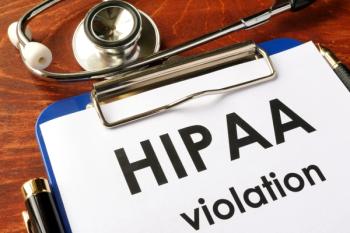
Creating a culture of safety and OSHA compliance
Primary care practices can create a stronger culture and compliance by prioritizing safety for both patients and employees.
While many may associate healthcare worker injuries with fast-paced ERs and stress inducing ORs, primary care physicians in medical offices and clinics also face serious health risks and hazards every day. Regardless of the work environment, exposure to sharps, drugs, and other factors make healthcare workers more vulnerable to workplace injury than those in
Sticking to a sharps safety strategy
Many major health industry organizations have highlighted the issue of sharps injuries in recent years. The Association of Occupational Health Professionals in Healthcare (AOHP)
Beyond the immeasurable toll needlestick injuries take on individual workers who suffer wounds or subsequent illnesses, skin punctures can also result in direct and indirect costs for healthcare facilities. This can include the costs for investigating the injury, lab testing, and treatment for infected staff-not to mention stress for the affected workers and lasting employee anxiety.
Despite periodic improvements, like the 30 percent reduction seen in the early 2000s following the passage of the
Monitoring medications to mitigate diversion
Primary care physicians are on the front lines of preventing prescription drug abuse. They can make a real difference in stemming drug misuse and addiction through high standards to prevent drug diversion within their own facilities. Drug diversion is a leading contributor to the ongoing opioid crisis that is claiming the lives of more than 115 Americans every day,
What’s more, physicians and other medical staff who obtain opioids and other controlled substances from their workplace face legal risks, such as criminal or civil liability, fines, jail time, and a revocation of their license to practice in healthcare settings. They also face risks to their own health if they use the drugs themselves, including allergic reactions, on-the-job impairment, errors in patient diagnoses or prescriptions, addiction, and overdose. Physicians can create a safer environment within hospitals, offices, and clinics, and they can help reduce drug abuse in their communities by informing staff on the associated risks for the medications they handle.
In turn, medical office staff can also help educate patients about medication risks, safe disposal methods, and removing potentially dangerous medications from their homes. A recent drug take back report
Communicating for high (hazard) compliance
Clear communication is key to preventing injuries in any hands-on workplace. Unfortunately, its importance gets overlooked all too often in fast-paced, high-volume physicians’ offices. Many injuries occur when physicians and medical office staff are overstretched, stressed, or fatigued. They don’t have the resources or communication standards in place to avoid or adeptly handle inadvertent errors.
It can be particularly dangerous for workers and patients alike when communication errors are made regarding hazardous chemicals. Whether for cleaning and disinfecting (e.g., ethylene oxide or phenolics) or for treating patients (e.g., antineoplastic drugs or aerosolized medications), mishandling chemicals can have serious consequences for both medical workers and patients. The CDC
Clear labeling and communication ensures those handling or encountering such hazards can take all appropriate precautions against potentially harmful exposure. In addition to a comprehensive medical surveillance program and routine evaluations of workers potentially exposed to hazardous chemicals, physicians can encourage open communication so office workers express concerns or suggest process improvements to keep staff and patients safe.
Physicians can create a stronger culture of safety and compliance by publicizing drug, chemical, and sharps safety information along with encouraging accurate incident reporting. Thorough training in safe handling and communication is just the beginning. Practices should offer training to keep everyone abreast of any new regulations. Regular training sessions should also serve as a reminder about the importance of maintaining a constant state of safety and compliance rather than retraining sessions “after the fact” following any incidents that compromise worker or patient safety.
Developing a culture of compliance will make physicians and other employees feel comfortable bringing any safety issues to light, such as inaccessible sharps disposal bins or drug diversion incidents. Workers should be fully aware of exposure control plans and help maintain an up-to-date accident and injury log, which can help track injury rates and guide necessary process improvements to prevent future incidents.
Safe and secure drug, chemical, and sharps handling and disposal shouldn’t be an afterthought. Despite working an environment where patients come first, primary care doctors, nurses, clinicians, and other staff must give their own safety the same level of attention they deliver to patients. Many thousands of safety incidents caused each year in physicians’ offices and clinics can be avoided by taking simple steps toward stricter OSHA compliance and more careful observance of safety and disposal recommendations.
Richard L. Best, PhD is Director of OSHA Compliance for Stericycle, Inc., where he contributes to the technical content of Stericycle’s OSHA training materials. He holds a Certificate in Industrial Hygiene Management from Columbia Southern University and is an OSHA Authorized Trainer. He is a member of the Association of Professionals in Infection Control and Epidemiology and the Organization for Safety, Asepsis and Prevention.
Newsletter
Optimize your practice with the Physicians Practice newsletter, offering management pearls, leadership tips, and business strategies tailored for practice administrators and physicians of any specialty.



